Pompano Beach, FL Pollen and Allergy Report for Summer 2023
Pollen Allergy Trends in Pompano Beach, FL
When is pollen lowest in Pompano Beach, FL?

May
Lowest month total PPM
Avg. PPM
When is pollen highest in Pompano Beach, FL?

April
Highest month total PPM
Avg. PPM
How does pollen in Pompano Beach, FL compare to Florida?
Pompano Beach has a higher average PPM than the state of Florida.
Pompano Beach yearly avg PPM:
Florida yearly avg PPM:
How does pollen in Pompano Beach, FL compare to the USA?
Pompano Beach has a higher average PPM than the USA.
Pompano Beach yearly avg PPM:
USA yearly avg PPM:
Is pollen worse this year in Pompano Beach, FL?
Spring 2023 was better than spring 2022.
Spring 2023 PPM:
Spring 2022 PPM:
Average PPM in Pompano Beach, FL
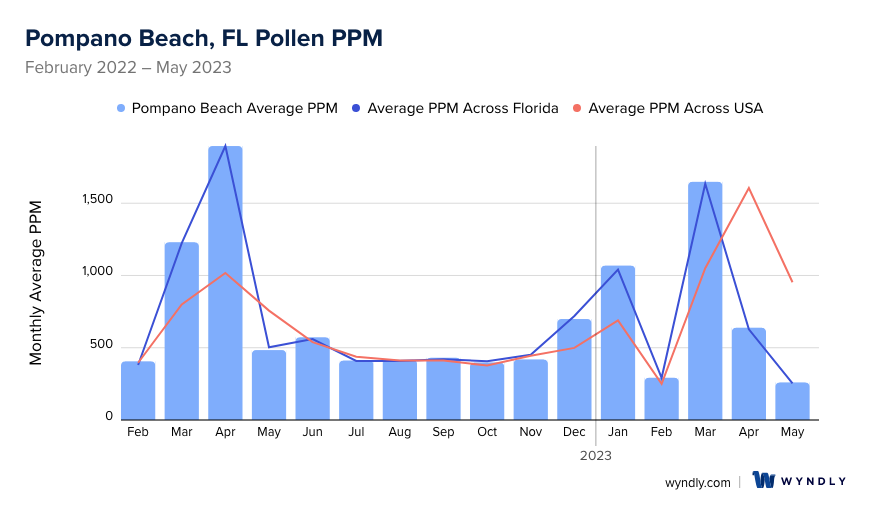

Pompano Beach, FL Pollen and Allergy Breakdown by Month
Grass
When is grass pollen highest in Pompano Beach, FL?
April has the highest grass pollen in Pompano Beach, FL with an average PPM of
When is grass pollen lowest in Pompano Beach, FL?
December has the lowest grass pollen in Pompano Beach, FL with an average PPM of
Tree
When is tree pollen highest in Pompano Beach, FL?
March has the highest tree pollen in Pompano Beach, FL with an average PPM of
When is tree pollen lowest in Pompano Beach, FL?
July has the lowest tree pollen in Pompano Beach, FL with an average PPM of
Weed
When is weed pollen highest in Pompano Beach, FL?
June has the highest weed pollen in Pompano Beach, FL with an average PPM of
When is weed pollen lowest in Pompano Beach, FL?
February has the lowest weed pollen in Pompano Beach, FL with an average PPM of
Pompano Beach, FL Pollen Monthly Breakdown by Pollen Type
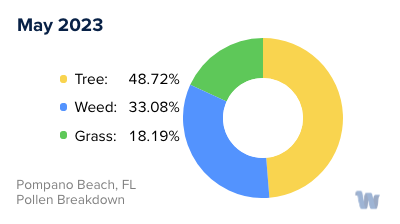
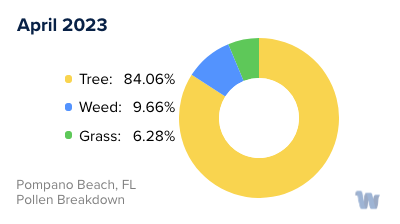




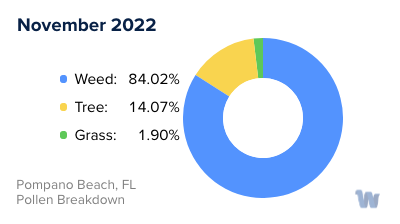


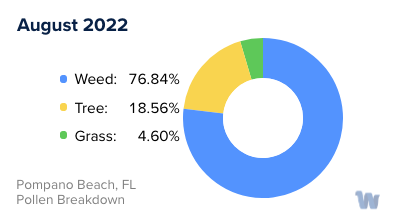
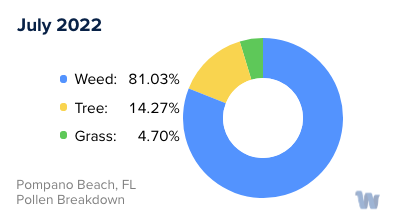

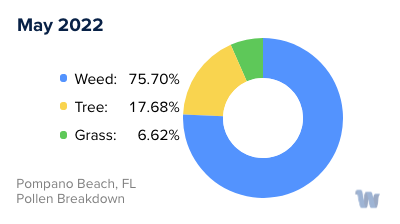

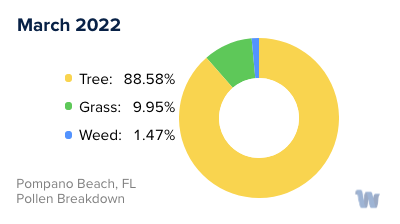
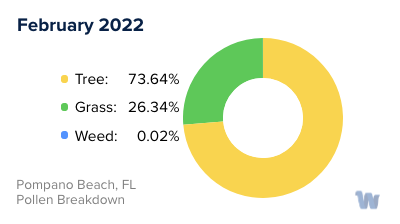
Pollen and Hay Fever in Pompano Beach, FL
In the vibrant city of Pompano Beach, Florida, life flourishes year-round, thanks to its tropical monsoon climate. However, the beauty of blooming plants and flowers is often a double-edged sword for those suffering from pollen allergies or hay fever.
Pollen allergies, often synonymous with hay fever, occur when an individual's immune system reacts to pollen grains. These microscopic particles are released by plants for fertilization and are carried around by wind, insects, or birds. For some, the immune system mistakes these harmless particles for dangerous invaders, leading to an allergic reaction.
In Pompano Beach, pollen allergy sufferers may notice symptoms during specific seasons when certain plants are in bloom. The types of pollen that trigger allergies in this region primarily come from trees, grasses, and weeds.
Tree pollen, predominantly from oak, pine, and cypress species, typically peaks in the spring months. As these trees begin to bud, they release large quantities of pollen into the air. Those with tree pollen allergies may experience symptoms like sneezing, runny nose, and itchy eyes during this time.
Grasses such as Bermuda grass, Bahia grass, and ryegrass are common in Pompano Beach and can also trigger pollen allergies. Grass pollen is usually highest in late spring and early summer. Therefore, those sensitive to grass pollen may find these months particularly challenging.
Weeds, especially ragweed, also contribute to the pollen count. Ragweed pollen season tends to occur in late summer and fall. Even though ragweed is not native to Florida, it can still find its way into the region through wind currents.
In conclusion, the timing and severity of pollen allergies in Pompano Beach, Florida, can depend greatly on the types of plants in bloom and the time of year. By understanding these patterns, individuals can be better prepared to manage their symptoms and enjoy the beautiful outdoors that this city has to offer.

